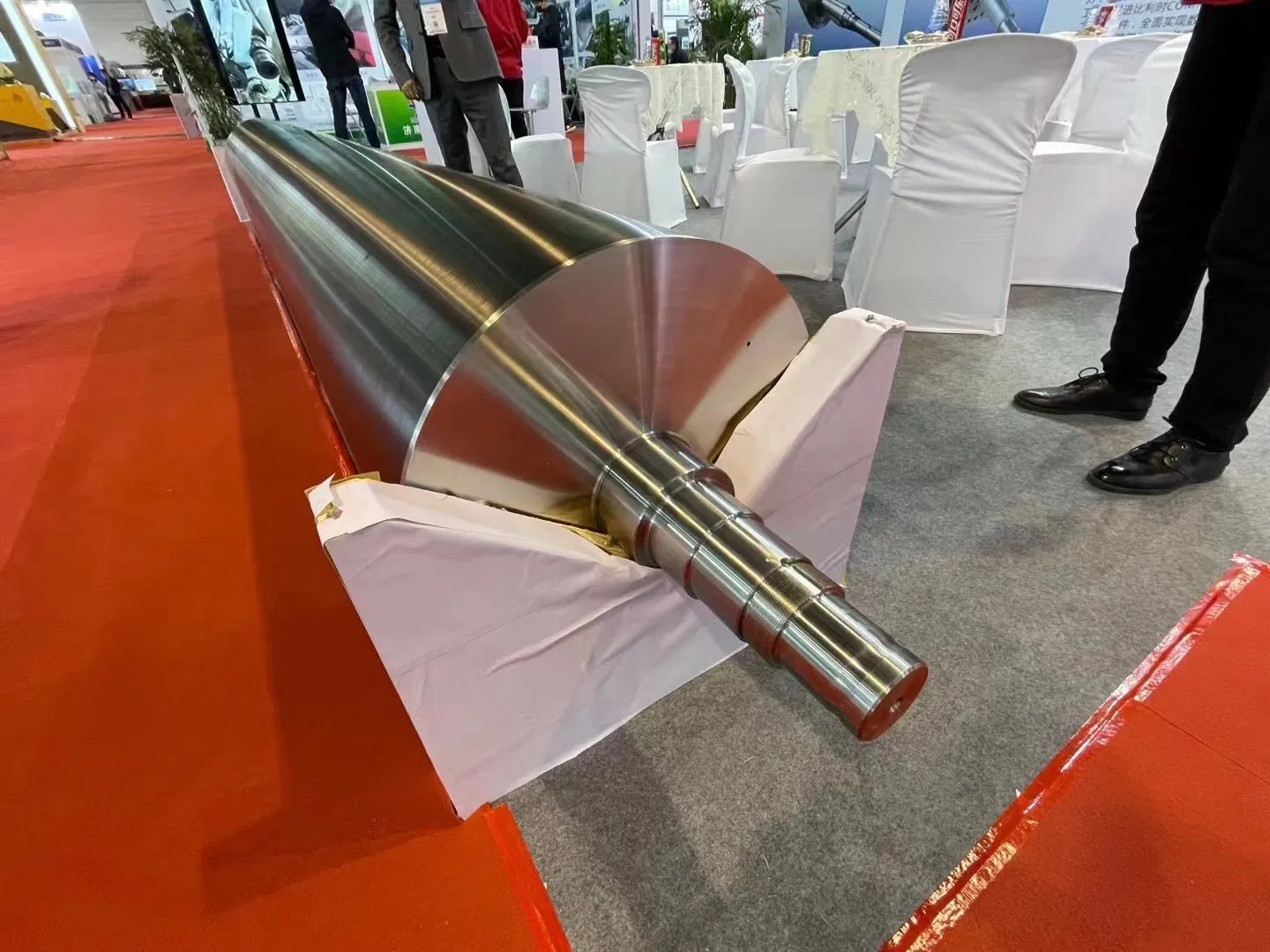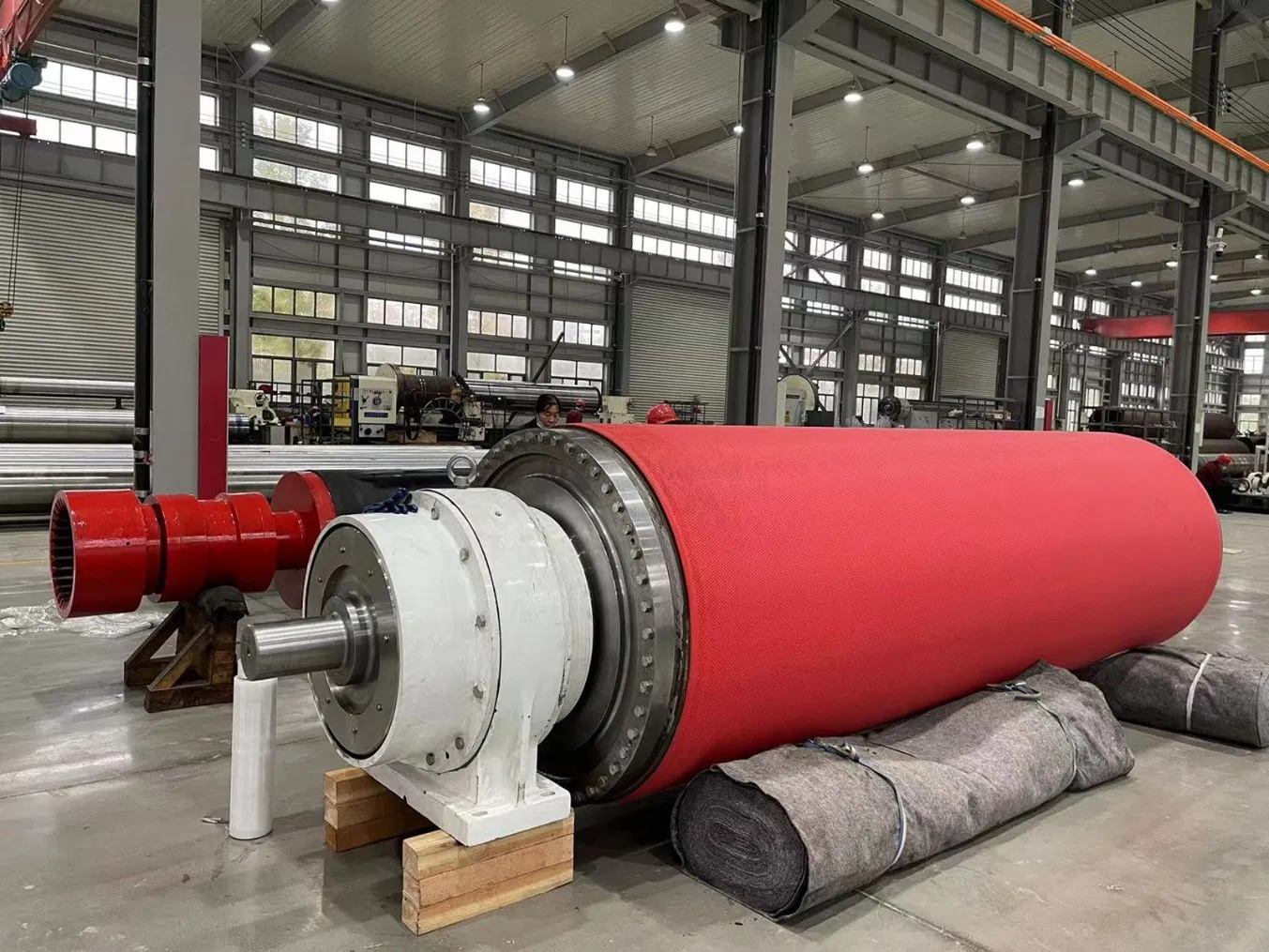In the heart of every paper mill, amidst the steam and the constant hum of machinery, lies a component so fundamental yet so complex that the entire operation hinges on its performance: the roller. From our perspective as manufacturers, paper mill rollers are far more than just cylindrical pieces of metal. They are marvels of precision engineering, designed to withstand incredible pressures, extreme temperatures, and corrosive environments, all while delivering the flawless surface quality demanded by the paper industry. This guide offers an inside look, a manufacturer's perspective, on the science, craftsmanship, and innovation that go into creating these critical assets.
The Anatomy of a Paper Mill Roller: A Manufacturer's Breakdown
To truly appreciate a paper mill roller, one must understand its construction. It’s not a monolithic object but a carefully assembled system of components, each with a specific purpose. From a manufacturing standpoint, the synergy between these parts is paramount.
The Roller Core or Body
The foundation of any roller is its core, typically made from forged steel, cast iron, or a centrifugally cast shell. The choice of material is the first critical decision we make. It’s a balancing act between strength, rigidity, and cost. For high-stress applications like press rolls, a high-strength forged steel core is often necessary to prevent deflection under immense pressure. Deflection, even a microscopic amount, can lead to uneven paper thickness and quality issues. It's worth noting that the internal design, whether solid or hollow for heating/cooling, is a key engineering consideration that directly impacts the roller's performance and the paper's properties.
The Roller Covering
The covering is where the roller meets the paper, and to be honest, this is where much of the magic happens. The material for the covering is selected based on the roller's position in the paper machine. It could be rubber, polyurethane, composite materials, or even advanced ceramics. As manufacturers, we focus on several key properties:
- Hardness (Durometer): This determines how the roller nips (presses) against another surface. The wrong hardness can damage the paper web or fail to extract enough water.
- Chemical Resistance: The papermaking process involves a cocktail of chemicals. The covering must resist degradation to ensure a long service life.
- Abrasion Resistance: The constant friction requires a tough surface that won't wear down quickly.
Applying this covering is a highly specialized process, involving vulcanization or casting, followed by precision grinding to achieve the perfect surface profile.
Journals and Bearings
The journals are the end shafts of the roller that sit within the bearings and allow it to rotate smoothly. The precision machining of these journals is non-negotiable. Any imperfection can lead to vibration, which is the enemy of high-speed paper production. The bearing selection is equally critical, and we often work closely with bearing specialists to ensure the chosen component can handle the specific load, speed, and environmental conditions of its placement in the mill.

Types of Paper Mill Rollers and Their Specialized Manufacturing
A paper machine is a colossal piece of equipment, often stretching the length of a football field. It's divided into sections, and each section uses rollers with unique designs and manufacturing requirements. But have you ever wondered how different these requirements can be from one end of the machine to the other?
Forming Section Rolls
At the "wet end," rollers like the breast roll and forming rolls operate in a high-moisture, corrosive environment. Here, our primary manufacturing concern is corrosion resistance. We often use stainless steel or apply specialized coatings. These rollers need to be perfectly balanced to avoid disturbing the delicate formation of the paper web.
Press Section Rolls
This is where the brute force happens. Press rolls squeeze water from the paper sheet under immense pressure. From a manufacturer's perspective, these are some of the most challenging rollers to build. They require incredibly strong cores to resist bending and specialized grooved or blind-drilled rubber covers to effectively channel water away. The precision of these grooves is measured in microns.
Dryer Section Rolls
Dryer rolls, or dryer cans, are essentially pressure vessels. They are heated internally with steam to evaporate the remaining water. Safety and heat transfer efficiency are our top priorities here. The shells are typically made of cast iron for its excellent thermal properties. We conduct rigorous pressure testing and ensure the shell wall has a uniform thickness for even drying, which is critical for preventing sheet curl and other defects.
Calender and Reel Rolls
At the "dry end," calender rolls are all about creating the final surface finish. They impart smoothness and gloss to the paper. These rollers must have a flawless, mirror-like surface. In my experience, achieving this level of finish requires a multi-stage grinding and polishing process that is as much an art as it is a science. Chilled iron is a common material choice due to its ability to take an exceptionally fine polish.
The Science of Materials: A Manufacturer's Guide to Roller Construction
The long-term performance of a paper mill roller is fundamentally tied to the materials used in its construction. As manufacturers, we are constantly evaluating and testing new materials and coatings to push the boundaries of durability and efficiency.
Metals: The Unseen Strength
The choice of metal for the roller body is dictated by physics and economics.
- Cast Iron: Excellent for thermal stability and damping vibrations, making it ideal for dryer cans and some calender rolls. - Steel (Forged and Fabricated): Offers superior strength and rigidity, making it the go-to for high-load press rolls and suction rolls where deflection must be minimized.
- Stainless Steel: The champion of corrosion resistance, essential for rolls at the wet end of the machine.
Coatings: The Functional Surface
The coating is the functional interface, and innovation here is relentless.
- Rubber & Polyurethane: The workhorses for press and sizing rolls. We can customize compounds for specific hardness, release properties, and wear resistance.
- Ceramics: Offer exceptional hardness and wear resistance, often used on rolls that are in contact with abrasive doctor blades. The application process, typically thermal spraying, is highly technical.
- Tungsten Carbide: A premium coating that provides an incredibly durable, wear-resistant surface, extending roller life significantly in harsh applications.
- Chrome Plating: A traditional choice for hardness and a smooth finish, particularly on calender rolls, though it's facing competition from more advanced thermal spray coatings.
Interestingly enough, the trend is moving towards composite materials and advanced thermal spray coatings that offer a combination of properties previously unattainable with a single material.

Precision Engineering: The Manufacturing Process from Our Perspective
Building a paper mill roller is a symphony of heavy industry and delicate precision. A single misstep at any stage can render the final product useless. Here’s a simplified look at the journey from raw material to finished roller from our workshop floor.
1. Core Fabrication: It begins with either forging a solid steel billet or centrifugally casting a hollow shell. This initial step defines the roller's fundamental strength.
2. Machining: The rough core is then placed on a large lathe. We machine the body and journals to near-final dimensions. This stage requires powerful equipment and skilled operators who understand how to work with massive, heavy workpieces.
3. Grinding and Crowning: This is where true precision comes in. The roller is ground to its final dimensions, with tolerances often measured in ten-thousandths of an inch. Many rollers, especially press rolls, require a "crown"—a slight convex curve in the center—to compensate for the bending that will occur under load. Calculating and grinding this precise curve is a critical manufacturing skill.
4. Balancing: High-speed paper machines require perfectly balanced rollers. We use sophisticated dynamic balancing machines to detect and correct even the slightest imbalance, which could otherwise cause destructive vibrations.
5. Covering and Finishing: If the roller requires a cover, it's applied now. This is followed by another round of precision grinding and polishing to achieve the specified surface texture and profile. For calender rolls, this final polishing can take many hours to achieve a mirror finish.
6. Final Inspection: Every roller that leaves our facility undergoes a battery of quality control checks. We verify dimensional accuracy, surface finish, hardness, and balance. It’s our final guarantee that the roller meets the customer's exact specifications.
Common Challenges and Innovations: A Manufacturer's Look at the Future
From our perspective, the job isn't just about building rollers; it's about solving problems. The most common issues we see are related to wear, corrosion, and vibration. Our research and development efforts are focused on combating these very challenges.
Many experts agree that the future lies in "smart" technology and advanced materials. We are actively developing rollers with embedded sensors that can provide real-time data on temperature, vibration, and nip pressure. This data allows mill operators to predict failures before they happen, schedule maintenance proactively, and optimize machine performance. Imagine a press roll that can tell you its cover is wearing unevenly or a dryer can that signals a drop in thermal efficiency.
Furthermore, the push for lighter, stronger, and more energy-efficient solutions is driving innovation in carbon fiber and other composite materials for roller bodies. These materials can significantly reduce a roller's mass, leading to lower energy consumption and safer handling, without sacrificing the necessary rigidity. It's an exciting time to be in this industry, as the humble roller evolves into a high-tech component at the center of the modern paper mill.
Ultimately, the quality of every sheet of paper you touch is a direct testament to the precision and durability of the rollers that made it. As manufacturers, we take immense pride in engineering these components, knowing that our commitment to quality on the factory floor translates directly to the quality of the final product in the hands of the consumer.
For more detailed information, please visit our official website:paper mill rollers
About the author: Johnathan Kade is the Director of Engineering at a leading industrial roller manufacturing firm with over 25 years of experience in the field. He specializes in material science and precision machining for the paper, steel, and converting industries. Johnathan is passionate about pushing the boundaries of roller technology, focusing on innovations that enhance durability, efficiency, and performance in demanding industrial environments. He holds a Master's degree in Mechanical Engineering and has published several papers on advanced coating technologies.


